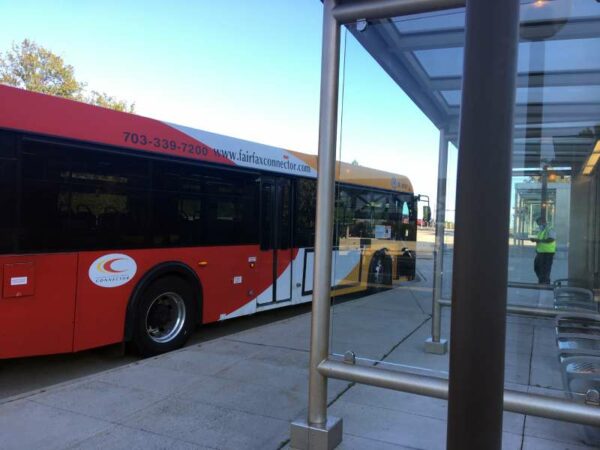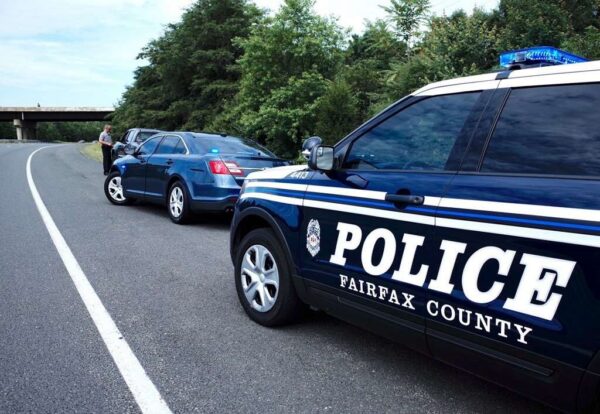
A change in Virginia law will allow police to once again pull over vehicles with excessively loud exhaust systems, starting tomorrow (Friday).
At a Fairfax County Board of Supervisors meeting on Tuesday (June 28), officials said the change was much needed, citing noisy cars as one of the top complaints they receive from constituents.
“This is a very annoying issue to a high percentage of my district’s residents,” Mount Vernon District Supervisor Dan Storck said. “I probably hear about this more than anything else.”
Earlier this year, the Virginia General Assembly passed legislation authorizing police to pull over vehicles and issue violations for loud exhaust systems.
Virginia eased rules on exhaust noise levels after the General Assembly passed legislation sponsored by local lawmaker Del. Patrick Hope (D-47) in 2020. Hope and other advocates argued at the time that police were disproportionately pulling over drivers of color for minor infractions, like broken tail lights, tinted windows, and loud exhaust systems.
That law went into effect in March 2021.
However, the change seemed to lead to a rise in noise complaints related to loud exhaust systems in Fairfax County and neighboring jurisdictions.
So, a new bill was created, passed, and signed into law by the governor this year that specifically made exhaust systems “not in good working order and in constant operation to prevent excessive or unusual levels of noise” a primary offense, meaning police can now pull over drivers specifically for that.
Braddock District Supervisor Walkinshaw and Springfield District Supervisor Herrity said they often hear from residents about loud vehicle exhausts. Hunter Mill District Supervisor Walter Alcorn said expensive, new exhaust systems with the express purpose of making noise are popular among some in his district.
Even Hope, the sponsor of the original bill, admitted to FFXnow that the 2020 bill had “unintendend consequences,” though he did vote against this session’s legislation.
“This [legislation] was in response to the unintended consequence in the 2021 law of some motorists taking advantage of the law change and installing obnoxiously loud exhaust systems on their vehicles, disturbing families and neighbors,” he wrote. “I heard many complaints from constituents that supported the intent of the law but the unintended consequence was a disturbance of the peace.” Read More
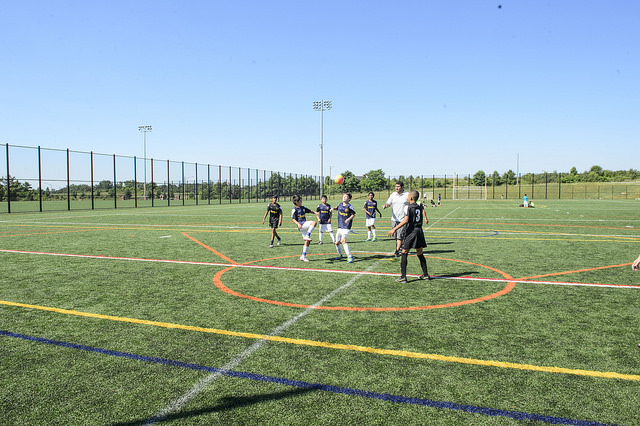
Fairfax County is exploring how private partnerships could bring more sports facilities to the area, but the five-year journey has now been slightly prolonged by an additional step.
The Board of Supervisors passed a measure on Tuesday (May 24) directing Fairfax County Park Authority and Neighborhood and Community Services staff to address racial and social equity issues when evaluating potential projects with input from Chief Equity Officer Karla Bruce and her team.
The additional review follows a consultant report released in August 2020 that identified possible Park Authority sites where private businesses could create sports facilities, such as a complex for 16 “rectangular fields” illustrated as soccer fields, another area for 10 baseball fields, an indoor track facility, a natatorium, and more.
The consultants’ report came through the Sports Tourism Task Force that the county created in 2017. One of the group’s several subcommittees involved Alpine-X representatives seeking to build the Fairfax Peak indoor winter slope facility at a landfill in Lorton.
On Tuesday, Springfield District Supervisor Pat Herrity, who chaired the task force, asked the board to direct the county executive to call for developers to submit public-private partnership proposals as identified in the report.
“Sports tourism facilities are rapidly developing around the East Coast and throughout Virginia,” he said during the meeting. “Vying to meet the demand of this incredibly recession-proof industry, we need to take advantage of our desirable location and extensive sports community by developing the identified sports tourism facilities.”
However, Chairman Jeff McKay modified that motion, clashing with Herrity on how to move forward. McKay said that some areas of the county largely lack these sports sites.
“We have teams, youth leagues throughout this county, that can’t find space today,” McKay said. “Before we…move forward with advancing larger complexes that might be out of reach for some of them, let’s make sure we understand where…inadequacies exist.”
McKay requested that the county create an equity impact assessment on the sports tourism report by the end of 2022.
The board approved consideration of that alternative 9-1, with Herrity dissenting. With Herrity’s original motion dislodged, the board approved the amended board matter 9-0 for a final vote in which Herrity abstained.
Photo via Fairfax County Park Authority
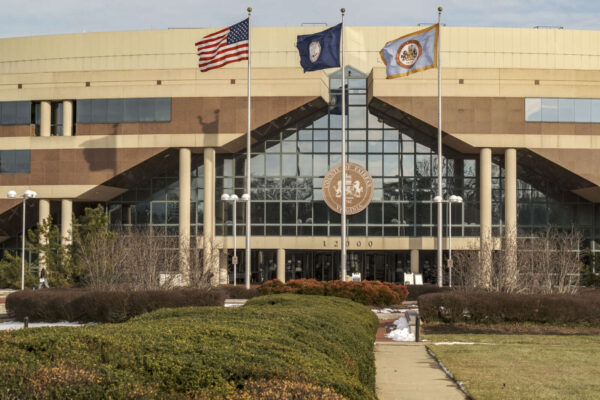
Rents in Fairfax County have gone up during the pandemic, reflecting a trend seen regionally and nationwide.
Multifamily rents increased 8.7% in the county between the first quarter of 2020 and first quarter of 2022, making the average rent $1,974, according to a Washington Post analysis.
“Rents have continued to increase across the region and in Fairfax County, making it harder for low- and moderate-income households to be able to afford to rent here,” Tom Fleetwood, director of the Department of Housing and Community Development, said in a statement.
He said the Board of Supervisors’ $44.7 million allocation in the upcoming budget is a critical investment that will directly help develop additional affordable homes.
Fairfax County’s typical increase in rent outpaces neighboring Arlington County, which has seen a 3.9% uptick since 2019 for an average rent of $2,258. Alexandria City and Loudoun and Prince William counties all saw larger increases than Fairfax County, though their average rents remain lower.
Nationally, median monthly rent has increased nearly 17% from March 2021 to March 2022, according to real estate firm Redfin, though existing renters may be experiencing a smaller, 2.7% increase during that time frame.
Fairfax County Chief Equity Officer Karla Bruce said at an Urban Institute event in August 2021 that the pandemic has exposed inequities.
“The inequity was present before the pandemic,” she said at the virtual event. “What the pandemic did is show anybody that might have doubted that how present inequity is in our communities.”
Bruce emphasized the importance of knowing who was most disproportionately affected in the pandemic and targeting strategies around those individuals.
Citing 2020 Census data, Fairfax County’s most recent demographics report noted that white residents no longer make up the majority of the population. As of 2021, the county had over 425,000 housing units: 46% single-family detached housing, 24% single-family attached, and 29.7% multifamily units.
The report does not break down who rents and who owns by race.
Across the country, 74% of solely white households own homes, far outpacing other racial demographics. The homeownership rate for solely Black households is at under 45%, a persistent trend that contributes to a racial wealth gap.
While Fairfax County has upped its goal to provide 10,000 affordable units by 2034, housing advocates have noted shortcomings.
The Metropolitan Washington Council of Governments in 2019 proposed a target of at least 320,000 housing units to be added to the region between 2020 and 2030, and at least 75% should be affordable to low- and middle-income households.
That housing target is being tracked, and Fairfax County government hasn’t adopted COG’s targets, according to a policy and statistical tool from the nonprofit Housing Association of Nonprofit Developers (HAND).
While D.C. and Alexandria have adopted those targets, most jurisdictions in the region haven’t, though several have set their own goals.
Fairfax County’s efforts to address affordable housing challenges have involved creating a housing trust fund and other initiatives.
Peter Tatian, a senior fellow at the Urban Institute and research director for Urban-Greater D.C., noted that housing production plays a key role in affordability. Urban was involved in developing the HAND tool to track governments’ efforts.
“There’s a lot of things…in the pipeline,” he said. “In terms of actual production at this point…we’re not seeing them yet.”
Tatian said governments need to address issues in multifaceted ways, but if he had to single out a top priority, he would say the public sector needs to make a local commitment to positive action.
“There may be some people who think that this is just the housing market, that’s just how it is,” he said. “But there’s a lot of things that governments do or don’t do that influences the market and influences what housing opportunities there are.”

Fairfax County Park Authority officials and others are calling for changes in funding to ensure people are able to access recreational amenities and address repairs.
Staff and community groups like the Fairfax County NAACP say the upcoming budget being considered by the county Board of Supervisors is inadequate for addressing the park system’s needs. It could even take longer to take care of those needs with a proposal to lengthen the amount of time between bond votes.
“The fee-based model that we’ve got today doesn’t really create an equitable and accessible parks system,” FCPA Board Chair Bill Bouie said at a Federation of Friends meeting on March 1, citing the county’s One Fairfax policy of equity.
The park authority runs 420 parks, nine rec centers, eight golf courses, two waterparks, playgrounds, 334 miles of trails, and athletic fields, including those at Fairfax County Public Schools. The authority charges visitors for certain amenities, such as golf.
Over the decades, Fairfax County has shifted how it supports the park authority’s operations. One park authority report noted that, in the 1980s, the county’s general fund covered 63% of costs, but that dropped to 46% in 2000 and 34% in 2018.
Meanwhile, the FCPA’s revenue fund, supported by fees and charges to customers, has increased its share of operations costs, going from 37% to 54% and 66% over the same time period.

“Unless something changes, the way we do business is only going to become harder,” Kiel Stone, who represents Braddock District on the park authority board, said at the meeting, which brought county officials together with the nonprofit Friends groups that help support parks and other facilities.
Citing equity concerns, staff and community advocates are seeking more funding to improve access to recreational amenities. Currently, the park authority spends over $1 million on scholarships to park programs annually, and it has requested $5 million to expand efforts to reduce costs for customers in need.
The county’s proposed budget for fiscal year 2023, which starts on July 1, sets aside $500,000 for the equity effort.
“A lot of our vulnerable communities…are shut out of a whole part of our park system,” said Lydia Lawrence, chair of Fairfax County NAACP’s Environmental and Climate Justice Committee.
The proposed budget also switches the parks bond schedule from a four-year cycle to six-year one. Park authority officials fear that funding will remain the same, hampering its ability to pursue capital projects.
Linwood Gorham, the park authority board’s Mount Vernon District representative, said he thinks the bond cycle should decrease to two years to help with financial planning and oversight, even if that means asking for less money with each round.
While the proposed FY 2023 budget provides nearly $5.9 million for resource management, it only gives the park authority $50,000 out of the nearly $752,000 it requested for natural resources sustainability.
The sustainability funding would support the park authority’s efforts to actively manage over 4,000 acres with activities like controlled burns.
The FCPA’s personnel costs will increase under the advertised budget as part of a countywide effort to improve compensation for workers. The county government’s general fund contribution is slated to increase from $28.3 million to $30 million.
At the Federation of Friends meeting, park authority board members and staff encouraged community members to participate in the Board of Supervisors’ public hearings on the budget, which will take place April 12-14.
Photo via Fairfax County Park Authority

The Fairfax County Police Department should implement new training and data collection practices to improve its culture around the use of force, a committee of appointed volunteers says.
The Use of Force Advisory Committee presented recommendations to the Fairfax County Board of Supervisors’ safety and security committee on Tuesday (March 1) based on a study conducted by the University of Texas at San Antonio.
While many of the study’s recommendations were accepted, the committee modified some of them to encourage cultural changes that it believes will be good for the department and the community.
“Without cultural change, internally and externally, policy change will not make meaningful and impactful improvements for a safer community and a safer Fairfax,” committee co-chair Yolonda Earl-Thompson said, emphasizing the importance of both FCPD leaders and officers embracing reform.
In addition to documenting uses of physical force by officers and resistance by citizens, the committee says police should gather data on the use of de-escalation techniques and their effectiveness, officers’ attempts to halt or prevent a use of force by colleagues, and other relevant variables.
It also recommends tracking instances where use of deadly force is authorized to reduce the risk of selection bias.
Released in June, the UTSA study examined 1,360 use-of-force cases from January 2016 to December 2018. It found that 42% of cases involved Black individuals, compared to 38% for white people, and Black people were 1.8 times more likely to have a weapon pointed at them by police.
The committee disagreed with the study’s recommendation that officers regularly rotate out of “high crime” patrol areas and district stations to avoid burnout, arguing that officers should be familiar with the specific community they serve to help build trust.
After the presentation, Fairfax County Police Chief Kevin Davis announced that the FCPD has adopted the ICAT training guide recommended by the UTSA study and will begin to train officers beginning in April 2022.
Chief Davis also announced that the department would begin training with non-lethal tools, such as BolaWraps, which can restrain suspects with minimum force.
Braddock District Supervisor James Walkinshaw suggested the department implement a program to teach officers about Fairfax County’s history, especially when it comes to generational trauma.
Police should use a “trauma-informed perspective” that understands the experiences of people of color, immigrants and undocumented residents, individuals with behavioral health or substance-use challenges, and other communities most affected by police violence, Earl-Thompson said.
“So many of the facts of that — from slavery through Jim Crow, Reconstruction, redlining, etcetera, etcetera — have been erased from so many of our history books,” Walkinshaw said. “If our officers got that, they would really be ahead of the game in terms of understanding the community.”
Davis implemented a similar program while serving as police commissioner in Baltimore. He agreed that it could be invaluable to graduates coming out of the academy.
Photo via FCPD/Facebook

A pilot program that will give monthly cash assistance to select low-income residents is in development in Fairfax County.
While eligibility criteria, payment amounts, and other details are still being determined, the county has allocated $1.5 million to the effort from its American Rescue Plan Act (ARPA) funds, as noted in a stimulus update to the Board of Supervisors’ budget policy committee yesterday (Tuesday).
First proposed at a health and human services committee meeting on June 29, the pilot will help people improve their financial situation by providing an additional, flexible source of income, county staff say.
“At its core, it’s an economic mobility initiative, but it’s also an anti-poverty initiative, and it’s certainly innovative,” Deputy County Executive Chris Leonard told the board last summer.
If it implements the pilot, Fairfax County will join a nationwide experiment with basic income programs that has also drawn in Arlington County and Alexandria. Research from around the world suggests the initiatives boost people’s happiness, health, and economic stability without limiting employment.
Fairfax County plans to model its pilot on the nonprofit UpTogether, which gives underserved individuals and families access to cash investments through an online platform that doubles as a social network.
UpTogether’s emphasis on trusting recipients to make their own decisions and building community deviates from traditional social services, which deliver vital resources like food or housing but often come with conditions, such as work requirements.
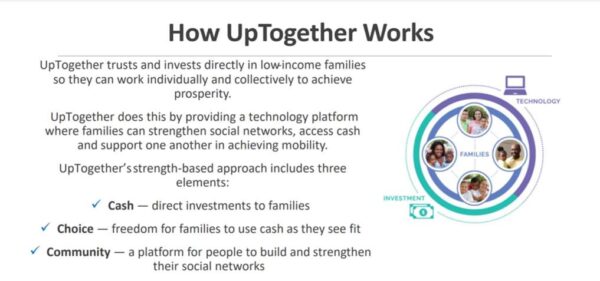
It’s the difference between helping people survive poverty and giving them the tools to escape it, Board of Supervisors Chairman Jeff McKay explained, suggesting families, particularly those with young children, as a possible target population for the pilot.
“Part of what I think our obligation to do is to stop this generational poverty that seems to happen everywhere in the country,” McKay said. “If you’re going to break the trends of generational poverty, you somehow have to get to the youth.” Read More
Changes to Virginia’s gas tax and transit fees will eventually bring savings to Fairfax County bus riders facing financial hardships.
Customized Fairfax Connector bus passes will cut fares in half for low-income riders with a new program that might begin this coming summer, county staff told the Fairfax County Board of Supervisors at a transportation committee meeting on Tuesday (Dec. 14).
The county plans to reduce fares for people with incomes up to 225% of the federal poverty level. That would put the eligibility cap around $29,000 for an individual or $59,625 for a family of four.
Residents of Fairfax County as well as the cities of Fairfax and Falls Church will be eligible.
The county’s transportation staff is working with the Department of Family Services and Housing and Community Development to get users of those services the discounted passes because they’ve already had their income screened. The county could later expand its outreach to others who qualify.
“I think this is going to be a great, great program once we get it piloted,” Lee District Supervisor Rodney Lusk said.
The county will receive $5.49 million in state funds to pilot the effort for three years as part of Virginia’s new Transit Ridership Incentive Program (TRIP), which supports projects that reduce barriers for low-income travelers or improve connectivity in urban areas, such as by creating dedicated bus lanes.
The grant program was created as part of a transit funding overhaul approved by Virginia General Assembly in 2020. The legislation also raised the gas tax by 5 cents per gallon on July 1, 2020 and again on July 1, 2021.
With about 30,000 daily riders, Fairfax Connector is the largest local bus system in Northern Virginia. It already offers free rides to middle and high school students, and the county temporarily suspended fares for all riders for part of 2020 due to the COVID-19 pandemic.
County staff are slated to update the board on the reduced fare effort this spring.
Board of Supervisors Chairman Jeff McKay asked staff to return with more information about the cost of implementing and administering the program compared to “the cost of just waiving fares, period,” noting that some neighboring localities are looking at eliminating fares.
“I support this needs-based one, given the size and complexity of ours,” McKay said. “But I do think we need to know what the administrative cost of this is and weigh that against a larger, maybe more aggressive way to provide transit as something that our residents in need can utilize.”
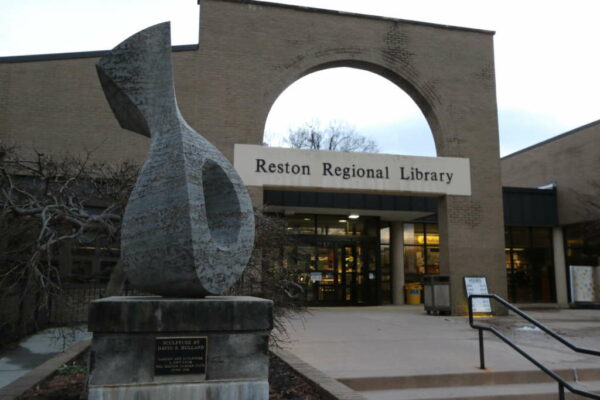
Fairfax County Public Libraries will no longer charge fines for most overdue materials, joining other jurisdictions in the D.C. area in an effort to maintain equity.
The FCPL Board of Trustees unanimously approved the policy in a meeting on Wednesday (Dec. 8). The new system, which begins on Jan. 1, would also reset fines that have already been incurred.
Board of Trustees Chair Fran Millhouser said the policy change is intended to encourage all individuals to take advantage of the library system.
“The FCPL Board of Trustees has approved eliminating fines on most materials and joins surrounding jurisdictions in removing this significant barrier to equitable access to information and library services,” said Millhouser.
The move comes after the board discussed the issue with the Fairfax County Board of Supervisors in mid-October. An FCPL analysis showed that overdue fines affect young people and individuals in low-income areas.
Blocked cards — cards that are not allowed to check out materials due to fines exceeding $15 — were more prevalent in the following areas:
- Reston Regional Library
- City of Fairfax Regional Library
- George Mason Regional Library
- Kingstowne Library
- Sherwood Regional Library
Before the pandemic, 17% of all cardholders had blocked cards. Blocked youth cards accounted for 23% of the total youth cardholder population. A link was found between low-income communities and blocked cards.
Library systems across the country, including in neighboring Alexandria City, Loudoun County, and Prince William County, have adopted fine-free models — a move that has resulted in a surge of returned materials.
Fines will still apply to materials in special collections like interlibrary loan materials, Chromebooks and mobile hotspots.
At the Thursday meeting, board trustee Liz Walker encouraged the library system to further identify what items were still not fine-free.
But Millhouser noted that a prescriptive approach was not appropriate because the library offers many resources.
“It’s good to leave it open as the library just becomes so diversified… we’re not just a library anymore.”

After a slight delay, Fairfax County Public Library has come to the same realization as dozens of other library systems in the D.C. area and across the country: that fining patrons for overdue materials doesn’t work.
The library’s Board of Trustees got informal but clear support from the Fairfax County Board of Supervisors at a joint meeting yesterday (Tuesday) to stop FCPL’s practice of charging late fees for unreturned books, DVDs, and other resources.
The trustees must still officially vote to eliminate library fines, but if that happens in November or December as anticipated, the new fine-free policy will take effect on Jan. 1, 2022, FCPL Director Jessica Hudson told the Board of Supervisors, noting that people will still be expected to pay back the cost of lost or damaged items.
“I have not heard anyone on this board that doesn’t wholeheartedly support [the fine-free strategy],” Board of Supervisors Chairman Jeff McKay said. “So, [I] look forward to the library board moving forward with that, and being able to accomplish that would be, I think, a big win for all our users.”
Fines Affect Library Access
Inspired by the One Fairfax policy, which commits the county to considering racial and social equity in its policies and decision-making, the FCPL Board of Trustees started exploring the idea of eliminating fines with the creation of an ad hoc committee in April.
Tasked with reviewing trends and determining the effectiveness of fines, the committee found that fines are not only futile at incentivizing the timely return of materials, but instead, actually discourage people from returning overdue items and utilizing library services.
“If you have a book checked out, and it’s a month late, and you know that you’ve got fines accrued on it, it doesn’t really make you want to run into the library and quickly turn it in and pay your fine,” Hudson said. “Instead, it acts as a punitive measure that ensures that some members of our population are never going to come back to the library.”
The committee recommended that FCPL eliminate fines at a Board of Trustees meeting on July 14, citing the policy’s ineffectiveness, its disproportionate impact on youth and low-income communities, and declining revenue from fines in a statement that the board accepted on Sept. 8.
According to the committee, 17% of the approximately 420,000 library cardholders that FCPL had prior to the pandemic — including 23% of cardholders younger than 18 — had their cards blocked because their accounts carried more than $15 in outstanding fines.
The number of blocked cards correlated closely with neighborhood income, with low-income areas served by the Reston, City of Fairfax, George Mason, Kingstowne, and Sherwood regional libraries having particularly high rates, according to Hudson. Read More


